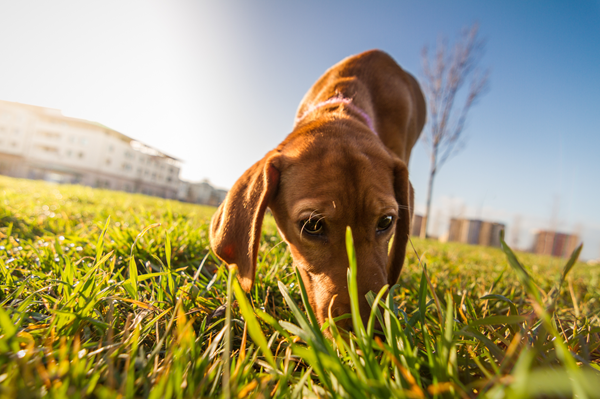
Why does your dog seem to prefer garbage to her dog food? Why does your cat eat bugs when she has treats right there?
If you have owned a pet for long, you’ve no doubt experienced the bewildering and sometimes stomach-turning phenomenon of your beloved furry friend gobbling up something utterly disgusting. Whether it is dirty socks, garbage scraps, or unidentified rotting things they find on a walk, pets seem to have an uncanny ability to find and devour the most repulsive items. But why?
Here we’ll delve into the mystery behind this peculiar behavior and shed light on why our pets eat such awful things – and what you might be able to do about it.
Instinctive Behavior
Dogs are natural scavengers, having descended from wolves that had to scrounge for food in a highly competitive environment. This survival instinct sometimes pushes them to consume anything that looks remotely like food. Similarly, cats have inherited hunting instincts that make them prone to pouncing on and devouring small, moving objects. So don’t blame them – it’s in their genes!
Playful and Explorative Behavior
Animals, especially young ones, explore their surroundings with boundless curiosity. Like toddlers, they use their mouth as a tool to investigate objects, textures, and tastes. So, when your cuddly puppy decides to eat the garbage, he might just be curious. Tasting and eating things is another way that pets can interact with the world and learn about their environment.
Boredom and Attention-Seeking Behavior
Sometimes, pets resort to eating things as a form of entertainment – particularly when they are left alone for extended periods, or they lack mental stimulation. Chewing on unusual things can alleviate boredom and provide a temporary outlet for their energy. If the behavior results in you paying attention to them, even if the attention is negative, pets may continue the behavior as a way of seeking interaction.
Illness
In some cases, pets may eat unusual substances due to a health conditions. Anemia (low red blood cells) or anything that upsets the gastrointestinal tract (like parasites, inflammatory bowel disease, liver disease or pancreatic disease) can cause pets to eat inappropriate items. For example, dogs may eat grass to induce vomiting if they have an upset stomach. Similarly, cats may consume non-food items like wool or plastic if they have anemia or gastrointestinal problems. If you notice your pet is eating an abnormal or excessive amount of non-food items, be sure to consult a veterinarian to rule out any underlying health issues.
Pica
Pica is a compulsive disorder characterized by the persistent craving and consumption of non-food items. It can affect both humans and animals, and it is believed to be caused by a combination of genetic, psychological, and physiological factors. Pets with pica may eat items such as rocks, dirt, string, or even their own feces. Pica that is solely behavioral in origin is uncommon and is often a “diagnosis of exclusion,” which means that health conditions, such as those described above, need to ruled out first. If you suspect pica, consult your veterinarian immediately to prevent health complications.
What to do about it?
Understanding why our pets eat strange things can help you manage and address the behavior effectively. If there isn’t an underlying medical condition, there are a few things you can do to keep your pet from eating repulsive or dangerous things:
- Ensure your pet is getting a balanced diet – confirm with your veterinarian.
- Schedule regular veterinary check-ups to rule out any new medical issues.
- Provide your pet with plenty of exercise throughout the day. Hire a dog walker if you are away from home. This includes cats too! Make sure to spend time playing with them daily.
- Eliminate access to any items that could be tempting to eat.
- Ensure that your pet has adequate mental stimulation. Enrichment toys and feeders can help with this (e.g., food puzzles, games).
- Provide lots of safe toys that your pet can’t swallow.
- Keep your pet on a leash whenever outside.
- Try covering tempting objects with a bitter apple spray to make them unappetizing.
- Distract your pet away from objects by using treats and praise. Teach the “leave it” cue.
If your pet continues to eat foreign objects or if you have concerns about your pet’s behavior or health, it is always best to seek professional advice from a veterinarian.
